 | TODAY IN SCIENCE HISTORY NEWSLETTER - 26 APRIL |
| Feature for Today |
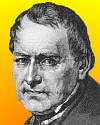 On 26 Apr 1774, Leopold von Buch was born, the German geologist, paleontologist and geographer noted for finding flaws in Abraham G. Werner's hypothesis that rocks come from aqueous origins. On 26 Apr 1774, Leopold von Buch was born, the German geologist, paleontologist and geographer noted for finding flaws in Abraham G. Werner's hypothesis that rocks come from aqueous origins.He was profiled by the venerable geologist Sir Archibald Geikie, in The Founders of Geology (1897), who described him as the most illustrious geologist that Germany has produced. In this excerpt you can learn how Leopold von Buch, one of Werner's most distinguished pupils, came to change from following his master's Neptunist views to become an advocate of Vulcanism. On 26 Apr 1884, the New York Times reported that “sending mails by electricity” was to be investigated by the Post Office Committee of the U.S. House, by providing for contracts with an existing telegraph company. The proposal was that since carriage of letters by steam locomotives was already done by contract, the delivery of mails by electricity seemed analagous. Now that e-mail has reduced snail-mail and troubles the income of the U.S. Postal Service, you may wish to read about the opportunity for Mails by Electricity that was presented more than a century ago. |
| Book of the Day | |
| |
| Quotations for Today | |
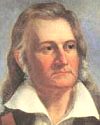 | "A true conservationist is a man who knows that the world is not given by his fathers, but borrowed from his children." |
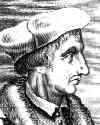 | "Anatomy is to physiology as geography is to history; it describes the theatre of events." |
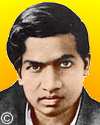 | Replying to G. H. Hardy's suggestion that the number of a taxi (1729) was 'dull': "No, it is a very interesting number; it is the smallest number expressible as a sum of two cubes in two different ways, the two ways being 13 + 123 and 93 + 103." |
| QUIZ | |
| Before you look at today's web page, see if you can answer some of these questions about the events that happened on this day. Some of the names are very familiar. Others will likely stump you. Tickle your curiosity with these questions, then check your answers on today's web page. | |
| Births | |
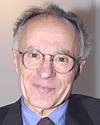 |  Arno Penzias is a German-American astrophysicist, born 26 Apr 1933, who shared a Nobel Prize for Physics with Robert Woodrow Wilson. They made a discovery which lent strong support to the big-bang model of cosmic evolution. Arno Penzias is a German-American astrophysicist, born 26 Apr 1933, who shared a Nobel Prize for Physics with Robert Woodrow Wilson. They made a discovery which lent strong support to the big-bang model of cosmic evolution. What was their discovery? What was their discovery? |
 |  A seismologist, born 26 Apr 1900, invented a scale that measures earthquake intensity which he developed with his colleague, Beno Gutenberg, in the early 1930's. The scale assigns numerical ratings to the energy released by earthquakes. A seismologist, born 26 Apr 1900, invented a scale that measures earthquake intensity which he developed with his colleague, Beno Gutenberg, in the early 1930's. The scale assigns numerical ratings to the energy released by earthquakes.  Can you name this scientist? Can you name this scientist? |
| Deaths | |
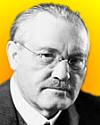 |  Carl Bosch (1874-1940) was a German industrial chemist who co-developed the Haber-Bosch process. Carl Bosch (1874-1940) was a German industrial chemist who co-developed the Haber-Bosch process. What is the product of the Haber-Bosch process? What is the product of the Haber-Bosch process? |
| Events | |
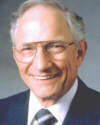 |  On 26 Apr of a certain year, the first U.S. patent for an integrated circuit was issued by Robert Noyce. On 26 Apr of a certain year, the first U.S. patent for an integrated circuit was issued by Robert Noyce. In which decade was the integrated circuit patent issued? In which decade was the integrated circuit patent issued? |
 On 26 Apr 1920, two leading astronomers - Harlow Shapley of the Mount Wilson Observatory and Heber D. Curtis of the Lick Observatory in California - debated each other at the Smithsonian Institution. They held opposite opinions as to whether the Milky Way Galaxy was the only galaxy in the universe, or one of many separate galaxies in the cosmos. By the end of the 1920s, the many galaxies theory was validated by Edwin Hubble. On 26 Apr 1920, two leading astronomers - Harlow Shapley of the Mount Wilson Observatory and Heber D. Curtis of the Lick Observatory in California - debated each other at the Smithsonian Institution. They held opposite opinions as to whether the Milky Way Galaxy was the only galaxy in the universe, or one of many separate galaxies in the cosmos. By the end of the 1920s, the many galaxies theory was validated by Edwin Hubble.  Which of the two debating scientists believed at the time in the Milky Way as the sole galaxy? Which of the two debating scientists believed at the time in the Milky Way as the sole galaxy? | |
| Answers |
When you have your answers ready to all the questions above, you'll find all the information to check them, and more, on the April 26 web page of Today in Science History. Or, try this link first for just the brief answers. Fast answers for the previous newsletter for April 25: Austria; Guglielmo Marconi; compass needles were affected by the aurora; the decade including the year 1983; the decade including the year 1953. |
| Feedback |
 If you enjoy this newsletter, the website, or wish to offer encouragement or ideas, please send feedback by using your mail reader Reply button. If you enjoy this newsletter, the website, or wish to offer encouragement or ideas, please send feedback by using your mail reader Reply button. |
--
If you do not want to receive any more newsletters, Unsubscribe
To update your preferences and to unsubscribe visit this link



Δεν υπάρχουν σχόλια:
Δημοσίευση σχολίου